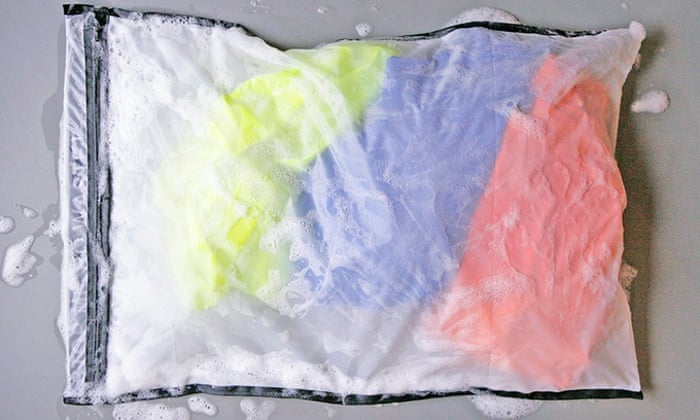Two German inventors created a laundry bag to prevent shedding microfibers ending up in oceans. Now, Patagonia will start selling it to customers

For the past three years, Alexander Nolte and Oliver Spies, surfing buddies and co-owners of Langbrett, a German retailer with four stores that sells surf gear and outdoor apparel, have been haunted by news reports connecting many of the products they sell to an emerging but serious environmental threat: microfiber pollution. Synthetic textiles, such as fleece jackets, send tiny plastic fibers into wastewater after washing. These bits eventually make their way into rivers, lakes and our oceans, where they pose health threats to plants and animals. The two men knew they had to act.
“We said, ‘either we have to stop selling fleece [apparel] or we have to think of a solution’,” explains Nolte. “So we went out to our beer garden and said ‘what can we do?’”
The beer-filled brainstorming session eventually led to Guppy Friend, a mesh laundry bag, that goes into the washing machine. The bag captures shedding fibers as clothes are tossed and spun, preventing the fibers from escaping. It’s roomy enough for a couple of fleece jackets or other apparel made of synthetic fabric. In two weeks, Langbrett, in partnership with outdoor clothing company Patagonia, will start shipping the Guppy Friend to the backers of their Kickstarter campaign. Patagonia will then begin selling the bag to customers.
The Guppy Friend is the first device designed and marketed specifically to prevent microfiber pollution. Microfibers are tiny, so they can easily move through sewage treatment plants. Natural fibers, such as cotton or wool, biodegrade over time. But synthetic fibers are problematic because they do not biodegrade, and tend to bind with molecules of harmful chemical pollutants found in wastewater, such as pesticides or flame retardants. Plus, fibers from apparel are often coated with chemicals to achieve performance attributes such as water resistance. Studies have shown health problems among plankton and other small organisms that eat microfibers, which then make their way up the food chain. Researchers have found high numbers of fibers inside fish and shellfish sold at markets.
Read more here.


















